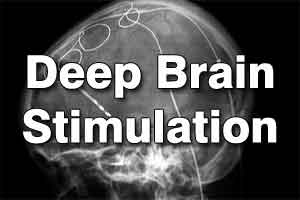- Home
- Editorial
- News
- Practice Guidelines
- Anesthesiology Guidelines
- Cancer Guidelines
- Cardiac Sciences Guidelines
- Critical Care Guidelines
- Dentistry Guidelines
- Dermatology Guidelines
- Diabetes and Endo Guidelines
- Diagnostics Guidelines
- ENT Guidelines
- Featured Practice Guidelines
- Gastroenterology Guidelines
- Geriatrics Guidelines
- Medicine Guidelines
- Nephrology Guidelines
- Neurosciences Guidelines
- Obs and Gynae Guidelines
- Ophthalmology Guidelines
- Orthopaedics Guidelines
- Paediatrics Guidelines
- Psychiatry Guidelines
- Pulmonology Guidelines
- Radiology Guidelines
- Surgery Guidelines
- Urology Guidelines
For refractory severe tinnitus- Deep brain stimulation safe and effective treatment option

Charlottesville, VA. Researchers from the University of California San Francisco and Veterans Affairs Health Care System, San Francisco have found deep brain stimulation to be safe and effective in the treatment of refractory severe tinnitus. Detailed findings of the study have been published today in the Journal of Neurosurgery. Dr Steven W. Cheung, M.D., and colleagues investigated the safety and efficacy of deep brain stimulation in the treatment of refractory severe tinnitus in a small group of patients.
Approximately 15 percent of people experience tinnitus.Tinnitus is the perception of sound in the ear with no external stimulus which may take a variety of forms, including ringing, humming, hissing, clicking, pulsating, or roaring. Tinnitus may come and go, or it may be continuous. It is commonly associated with age-related hearing loss, damage to the ear sustained from exposure to loud noises, and an adverse reaction to medications. It can also be impacted by physical or emotional stress, mood changes, and sleep disturbance.
Deep brain stimulation (DBS) surgery is currently performed to treat a variety of movement disorders and some psychological disorders in select patients. During surgery, electrodes attached to the end of leads are implanted deep within the brain in areas where abnormal electrical impulses are disrupted. The leads are connected by insulated wires to an implantable pulse generator, a battery-operated micro-electronic device that is placed elsewhere in the body, just under the skin. The generator delivers electrical stimulation to the brain sites where the leads have been implanted. This stimulation helps relieve patients' rigid limbs and other symptoms.
The goals of the present study were threefold: 1) develop a DBS therapy that could reduce the severity of tinnitus in patients in whom other treatments had been ineffective; 2) provide a long-term reduction in the loudness of tinnitus; and 3) provide a critical evaluation of the effects of DBS on tinnitus in patients with no confounding comorbidity such as a movement disorder.
The authors report the results of a prospective, open-label, nonrandomized, phase I clinical trial of DBS in five patients (three men and two women, mean age 51 years) with severe tinnitus that had proved refractory to acoustic or behavioral treatments. Four of the patients reported tinnitus in both ears and one patient reported it in only one ear. Their tinnitus produced such a negative impact on their lives that they chose to undergo an unproved invasive procedure in the hopes that it could provide meaningful relief of their symptoms.
Each patient underwent stereotactic neurosurgery to implant DBS electrodes in the caudate nucleus on each side of the brain. The patients were awake during surgery and interacted with the surgical team, which helped the team determine the final position of the leads. There were no serious surgery-related adverse events in these patients.
After a five-week period of postoperative healing, the patients began a stimulation optimization period during which settings on the DBS internal pulse generator were periodically adjusted in the clinic and at home by the patient. The goal was to find a stimulation setting that would prove optimal for reducing the severity of tinnitus for each patient, and thus this period varied in length (5 to 13 months) according to each patient's needs.
Once a promising stimulation setting had been determined, the patients entered a 24-week-long period of constant stimulation at that setting. Minor setting adjustments were made in only one patient during that time period.
Overall, DBS proved effective in diminishing the negative experience of tinnitus, although each patient experienced the effect differently. Various tests were applied to measure the efficacy of DBS in tinnitus. A comparison of the patients' Tinnitus Functional Index scores before treatment and during constant stimulation showed significant clinical improvement in three patients (60%). A comparison of the patients' Tinnitus Handicap Inventory scores before treatment and during constant stimulation showed significant clinical improvement in four patients (80%). One patient found no relief.
In this group of five patients, there were no serious surgery- or stimulation-related adverse effects. Surgery-related adverse events included postoperative incisional pain and headache, which were expected and resolved quickly. Stimulation-related adverse events included worsening of tinnitus symptoms and, in one patient, visual phantoms that occurred briefly while the stimulation settings were being adjusted.
Given the promising outcomes of this study, the authors look forward to a phase II study. They suggest that this next trial could benefit by a refinement of the target position of the DBS leads, with the aim of shortening the stimulation optimization period and making the treatment effect more uniform.
When asked about the study, Dr. Cheung said, "Our research team from the disciplines of Neurosurgery, Neurology, Otolaryngology, and Radiology worked synergistically to tackle the challenging condition of treatment-resistant tinnitus. We are encouraged by results of this phase I trial and hope to use a personalized targeting approach to implant electrodes in a phase II trial to improve efficacy."
For more details click on the link: http://dx.

Disclaimer: This site is primarily intended for healthcare professionals. Any content/information on this website does not replace the advice of medical and/or health professionals and should not be construed as medical/diagnostic advice/endorsement or prescription. Use of this site is subject to our terms of use, privacy policy, advertisement policy. © 2020 Minerva Medical Treatment Pvt Ltd